Results 9,241 to 9,250 of 12096
Thread: Anandtech News
-
03-07-19, 10:09 AM #9241
Anandtech: Lenovo Unveils ThinkStation P520 & P920 ‘AI Workstations’: Xeon Plus Quadr
Lenovo this week has introduced its new single and dual-processor “AI Workstations”, which the company is pitching at the artificial intelligence and deep learning markets. The new machines are based on the existing ThinkStation P520 and ThinkStation P920 workstations, and are powered by Intel’s Xeon processors as well as one or two of NVIDIA’s latest Quadro RTX 6000 professional graphics cards.
The Lenovo AI Workstation lineup consists of two systems which specs are tailored for AI, DL, and similar workloads, according to the manufacturer. The systems can additionally be clustered together using Lenovo's Intelligent Computing Orchestration (LiCO) software to further improve their aggregate performance at both the desktop and datacenter levels. Both new ThinkStation machines run Ubuntu Linux, which in a departure from the usual PC desktop situation, is actually far more common than Windows when it comes to deep learning work. Besides the usual *nix synergies, a big reason for this is because Ubuntu Linux is the only OS currently recommended by NVIDIA for its popular RAPIDS open source software libraries, which are widely used in analytics and data science tasks.
Under the hood, the new ThinkStation P520 AI Workstation is powered by Intel's Xeon W-2155 processor (10/20 cores/threads, 3.3 – 4.5 GHz, 13.75 MB L3, 140 W) and paired with NVIDIA’s Quadro RTX 6000 graphics card (4,608 cores, 576 tensor cores, 72 RT cores, 16.3 FP32 TFLOPS, 24 GB GDDR4). The system is outfitted with 128 GB of DDR4-2666 ECC memory, a 512 GB NVMe SSD, as well two 1 TB 2.5-inch SATA SSDs.
Meanwhile the ThinkStation P920 AI Workstation is an inherently more powerful machine. It runs two Intel Xeon Gold 6136 chips (12/24 cores/threads, 3 – 3.7 GHz, 24.75 MB L3, 150 W) accompanied by a pair of NVIDIA’s Quadro RTX 6000 accelerators. The workstation comes equipped with 384 GB of DDR4-2666 ECC memory, 1 TB NVMe SSD, and two 2 TB 2.5-inch SATA SSDs.
Both of new ThinkStation systems are also available with further customizations as a build-to-order operation, allowing for more storage and other tweaks. Lenovo says that the new systems will be available by the end of March, and while their press release does not reveal any pricing information, these professional systems won't be cheap. As they're based on Lenovo's high-end workstation platforms, the P920 AI Workstation in particular will easily be a $10,000+ machine.Lenovo ThinkStation P520 & P920 AI Workstation Specs ThinkStation P520
AI WorkstationThinkStation P920
AI WorkstationCPU Intel Xeon W-2155
10/20 cores/threads
3.3 - 4.5 GHz
13.75 MB L3
140 W2 × Intel Xeon Gold 6136
2 × 12/24 cores/threads
2 × 3 - 3.7 GHz
2 × 24.75 MB L3
2 × 150 WGPU NVIDIA Quadro RTX 6000
TU102
4,608 cores
576 tensor cores
72 RT cores
24 GB GDDR42 × NVIDIA Quadro RTX 6000 RAM 128 GB (8 × 16 GB) DDR4-2666 384 GB (12 × 32 GB) DDR4-2666 Boot Storage 512 GB NVMe SSD 1 TB GB NVMe SSDs Data Storage 2 × 1 TB SATA SSDs 2 × 2 TB SATA SSDs OS Ubuntu Linux
Related Reading:
- Lenovo Updates ThinkStation P320 with Intel Xeon E3 v6 and NVIDIA Quadro Pascal
- Lenovo Unveils ThinkStation P320 Tiny SFF Workstation
- Lenovo Unveils ThinkStation P410/P510: Intel Xeon E5 v4 with Up to 8 Cores, NVIDIA Quadro M6000
Source: Lenovo
More...
-
03-07-19, 12:23 PM #9242
Anandtech: TCL Shows Off the Alcatel 7: Their First High-End 5G Smartphone
Right now, TCL produces smartphones under two major brands. For the Alcatel brand the company produces entry-level and mainstream handsets, whereas under the BlackBerry brand it makes specialized smartphones for those who need an advanced security and/or a QWERTY keyboard. This product segmentation means that at present, TCL is not addressing the market for ‘classic’ higher-end smartphones. However this is going to change later this year, when TCL launches the Alcatel 7 series and their first 5G handset.
TCL demonstrated a mock-up of the Alcatel 7 5G smartphone at Mobile World Congress last week. The handset will use TCL’s 6.39-inch (or 6.5-inch) LCD display with a 2340x1080 resolution, 600 nits brightness, a 1500:1 contrast ratio, and hole-punch selfie camera that the company showcased earlier at the trade show. Unfortunately TCL is not disclosing the SoC + modem platform it intends to use for the smartphone (though, the list of 5G modems available on the open market is currently limited), but says it will be paired with 6 GB of RAM, and 64 GB of NAND storage.
The imaging capabilities of the Alcatel 7 5G handset will include a triple-module (48 MP + 16 MP + 5MP) rear camera array with a dual-tone LED flash, and a 24 MP front camera. Both cameras are expected to support the TCL's 4-in-1 big pixel technology, and of course, some AI-based features.
When it comes to overall design of the Alcatel 7 smartphone, it will feature a metal frame, 2.5D glass on the front, and 3D glass gradient cover on the back. Since the phone relies on an LCD display, it's not possible to use it with an in-screen fingerprint scanner, which is why the scanner is more traditionally located on the back-side of the handset.
Since it's equipped with a sizable 6.39-inch (or even a 6.5-inch) screen, the Alcatel 7 is rather big overall. But if nothing else, TCL is putting that space to good use, and they'll be equipping the phone with an above-average capacity 4000-mAh battery – though it will be interesting to see what the 5G modem does to overall battery life. Meanwhile, as far as the feel of the phablet-sized phone goes, since the backside of the phone is rounded, it does not feel thick despite the size, and is rather comfortable to hold.
TCL intends to start shipments of its Alcatel 7 5G handset sometime later this year. Since TCL's biggest market for Alcatel phones is Europe, it makes a lot of sense for the company to wait till 5G networks are deployed in the region and then launch the product commercially. Meanwhile the company is tight-lipped about pricing of the Alcatel 7, but since the phone is aimed at a segment currently untapped by the brand, it will naturally cost more than existing smartphones Alcatel phones.
Related Reading:
- TCL/CSOT Reveals Mobile AMOLED & LCD Hole-Punch Displays
- Sizing Up The 5G Modem Market: Qualcomm, Intel, Huawei, Samsung, UniSOC, and Mediatek
- Sony Has a Prototype 5G mmWave Xperia Smartphone
- Oppo Demonstrates 5G Smartphone at MWC 2019
- OnePlus 5G Prototype: Living Large
Source: TCL
More...
-
03-08-19, 01:00 PM #9243
Anandtech: Alcatel Readies a 5G Mi-Fi Hotspot with USB-C (and no Wi-Fi?)
One of the major use cases driving 5G development and deployment is the need for high-speed Internet connectivity in locations where it is impossible (or expensive) to cover the last mile via cables. Both carriers and hardware makers, in turn, are looking to capitalize on this by offering service contracts and high-end 5G mobile hotspots. TCL, the company behind Alcatel and BlackBerry smartphones, is prepping a rather interesting device: a 5G Mi-Fi, a 5G hotspot with a USB Type-C interface.
The Alcatel "5G USB Device" (which will likely go by other names when distributed by the carriers) supports download speeds of up to 2 Gbps (using 4x4 MIMO) and upload speeds of up to 1 Gbps (using 2x2 MIMO). The hotspot is based on MediaTek’s Helio M70 modem, which supports 5G NR/LTE and 5G NSA & SA on the sub-6 GHz band. So the hotspot won't have access to mmWave and the even higher bandwidths that provides, but sub-6 is better suited for the kind of last-mile deployments that rural 5G will be aimed at anyhow. The unit has 1 GB of LPDDR4 memory, 1 GB of NAND flash storage, and a 4000-mAh battery that can last for one day, according to the manufacturer.
One of the odd things about Alcatel’s 5G Mi-Fi is the fact that TCL does not explicitly list it as supporting Wi-Fi (at least not on its present form). Instead its only client connectivity is a USB Type-C port, which seems to be used for power as well. There are of course other wired Mi-Fi devices on the market, but it's unusual for these devices to ship with large internal batteries, as is the case for Alcatel's device. So I'm going to be surprised if we actually see the device ship without Wi-Fi support.
At the moment TCL is not saying when it plans to release its device commercially. Like so many other 5G client devices, we expect to see it launch once the 5G networks are deployed.
Related Reading:
- Netgear Preps Next-Gen 4G and 5G Nighthawk Wi-Fi Hotspots
- Sizing Up The 5G Modem Market: Qualcomm, Intel, Huawei, Samsung, UniSOC, and Mediatek
- Sony Has a Prototype 5G mmWave Xperia Smartphone
- Oppo Demonstrates 5G Smartphone at MWC 2019
- OnePlus 5G Prototype: Living Large
More...
-
03-08-19, 01:00 PM #9244
Anandtech: Western Digital to Demo Dual-Actuator HDDs Next Week: Double the Actuators
Western Digital has revealed this week that it will demonstrate its first dual-actuator hard drives at next week's OCP summit. Marking the company's first foray into multi-actuator drives, WD expects their dual-actuator HDDs to offer roughly twice the performance of conventional, single-actuator drives, although they'll be trading off some power efficiency in the process.
While the capacities of enterprise and nearline 7200-RPM hard drives has been increasing consistently, due to the laws of physics the I/O performance of these drives has remained at around 80 IOPS per drive. This means that because capacity has gone up, the drives' IOPS per TB performance ratio is decreasing, something that is especially problematic when it comes to read IOPS. As a result, it is getting harder for datacenter operators to meet their service level agreements and quality-of-service requirements.
To combat this, one of the most straightforward ways to increase drive performance and throughput is to increase the number of individual actuators, allowing drives to essentially service twice as many I/O operations at once. Both Seagate and Western Digital have been developing their multi-actuator HDDs for quite a while. The former demonstrated a working dual-actuator drive last March, whereas the latter will show off its dual-actuator prototype next week.
Western Digital has rather high expectations for its dual-actuator HDDs. The company expects the new drives to offer double the sustained transfer rates as well as double the IOPS when compared to existing HDDs. Which if we use existing drives as a baseline, would mean that we're talking about data rates on the order of 500 MB/s as well as 160 ~ 200 IOPS. Meanwhile, although no official numbers were provided ahead of next week's formal reveal, the company did publish a photo of its dual-actuator prototype.
The trade-off for dual-actuator technology is that since these hard drives are essentially two HDDs in a single chassis, they will consume more power than traditional drives. But it's still 26% less than two independent HDDs, owing to the fact that it's still a single set of spinning platters. For example, Western Digital’s Ultrastar 14 TB SATA hard drive consumes 7.6 W in operating mode, and a pair of such HDDs would be 15.2W. Meanwhile, a hypothetical dual-actuator hard drive that consumes 26% less than these two would end up at around 11.25W, which, importantly, is within power limits of a typical 3.5-inch SATA bay (typically up to 12 W).
Right now, Western Digital is not disclosing when it intends to commercially release its dual-actuator HDDs. Instead, the company is stressing right now that it is only talking about a technology demo. Nonetheless, we hope the company will make its plans a bit more clear next week.
Related Reading:
- State of the Union: Seagate's HAMR Hard Drives, Dual-Actuator Mach2, and 24 TB HDDs on Track
- 16 TB MAMR Hard Drives in 2019: Western Digital
- Seagate’s Multi Actuator Technology to Address HDD IOPS Woes
- Western Digital Stuns Storage Industry with MAMR Breakthrough for Next-Gen HDDs
Source: Western Digital at Storage Field Day (via ComputerBase)
More...
-
03-08-19, 03:33 PM #9245
Anandtech: AOC Introduces Its G2868PQU Monitor: An Inexpensive 4K Gaming Display with
AOC this week introduced its first entry-level 4K gaming display. The G2868PQU monitor boasts with numerous firmware-based features designed for gaming, as well as a 1 ms response time. The monitor also supports AMD’s FreeSync technology, though this isn't being paired with any kind of high refresh rate ranges.
The AOC G2868PQU is a 28-inch LCD that uses a ‘next-generation HDR-Ready' TN panel. The monitor features a 3840×2160 resolution, 300 nits maximum brightness, a 1000:1 contrast ratio, a 1 ms response time, and a 60 Hz maximum refresh rate. The display has a scaler than supports AMD’s FreeSync dynamic refresh rate technology, but the manufacturer does not disclose its range or whether it's wide enough to supports Low Framerate Compensation.
Although AOC claims that the monitor is ‘HDR-ready’, it never specifies whether the monitor supports HDR10 or other HDR transport formats. In any case, an LCD panel featuring a maximum brightness of 300 nits can hardly offer a good HDR experience. Meanwhile, the display can cover 102% of the sRGB and 82% of the AdobeRGB color spaces.
Meanwhile, since the G2868PQU is aimed at gamers, it supports AOC’s Game Color (user-adjustable saturation), Shadow Control (user-adjustable brightness for dark areas in games), Game Modes (specific presets for FPS, RTS, Racing genres, and three user-defined presets), and Dial Point (crosshair) features.
AOC's monitor comes in a rather angular chassis with red inlays to emphasize its gaming nature, and the stand is height-adjustable. As for connectivity, the G2868PQU offers four inputs (D-Sub, DVI-DL, DisplayPort, HDMI-MHL) to ensure compatibility with both modern and legacy systems, a quad-port USB 3.0 hub, an audio input, and a headphone output. As an added bonus, the LCD has stereo speakers.
AOC will start selling the G2868PQU monitor later this month. The display will cost £319 in the UK, so expect it to be priced at around €370 in Europe and $350 in the USA.Specifications of AOC's Entry-Level 28" Gaming Display G2868PQU Panel 28" TN Native Resolution 3840 × 2160 Maximum Refresh Rate 60 Hz Dynamic Refresh Tech FreeSync Response Time 1 ms (gray-to-gray) Brightness 300 cd/m² Contrast 1000:1 Viewing Angles 170°/160° horizontal/vertical (not confirmed) Pixel Pitch 0.1614 × 0.1614 mm PPI 157 Color Gamut 102% sRGB
82% Adobe RGBInputs 1 × DisplayPort 1.2 (?)
1 × DVI DL (?)
1 × D-Sub
1 × HDMI 2.0USB Hub 4-port USB 3.0 hub Audio 3.5-mm headphone jack
3.5-mm audio-in
3W stereo speakersColor Grey, with red inlays Power Consumption Standby ? Maximum ?
Related Reading:
- AOC Unveils Cheap G1-Series Curved Displays with 144 Hz & FreeSync: Starting at $280
- AOC Launches Inexpensive IPS WQHD 31.5-Inch Q3279VWFD8 Gaming LCD with FreeSync
- Cheap 75-144Hz FreeSync: AOC Unveils G90 Gaming Monitors from €179
Source: AOC
More...
-
03-08-19, 03:33 PM #9246
Anandtech: Cincoze DX-1100 Ultra Compact Rugged System: Xeon-E with Custom I/O Expans
Cincoze has introduced its new ultra-compact rugged embedded workstation for use in space-constrained environments. The Diamond Extreme Series DX-1000 system supports Intel’s 8th Gen Core as well as Xeon E-2000-series CPUs, features extremely robust connectivity options for both office and industrial environments. Of particular note, the One of the key features of the machine is its custom I/O.
The Cincoze DX-1000 comes in a 3.2-liter metallic unibody chassis, which serves to both contain and cool the internal components. The system can accommodate Intel’s 8th Gen Core or Xeon E-2100-series processors, though as it's passively cooled it stops just short of supporting Intel's complete lineup of chips, with Cincoze only qualifying chips up to 80W TDP. Meanwhile the miniature machine also sports two DDR4 SO-DIMM slots, two hot-swap front-accessible 2.5-inch SATA bays, three mSATA connectors, an optional M.2-2230 CNVi Wi-Fi adapter, and a SIM card bay. As a rugged PC the DX-1000 is rated for a wide range of operating conditions, including extreme temperatures (from -40°C to 70°C), various DC power input voltages (9~48 VDC), and it can tolerate high vibrations and shocks (5/50 Grms) that are common in industrial, in-vehicle, mobile, and similar environments.
Aside from the rugged chassis, the other key feature of the Diamond Extreme Series DX-1000 is support for Cincoze’s proprietary CMI (Combined Multiple I/O) and CFM (Control Function Module) modules, which allow the manufacturer to tailor the external I/O capabilities of the system to a customer's needs.
By default, the Diamond Extreme Series DX-1000 is configured with eight USB 3.0/3.1 ports (6+2), a DVI-I output (which supports D-Sub with an appropriate adapter), a DisplayPort, an HDMI, two GbE connectors (powered by Intel’s I219-LM, and I210-IT controllers), four COM ports, audio output/input connectors, an external fan connector, and a proprietary power input. But with various optional CMI or CFM modules installed, the Cincoze DX-1000 can get four additional RJ-45/M12 GbE ports, two more COM ports, a 16DIO (8-pin in, 8-pin out) connector, a DIN-RAIL mount kit, and so on.
Cincoze already lists its Diamond Extreme Series DX-1000 on its website, and while the company is taking inquiries, it's not clear whether the system is actually available at this time. Meanwhile with the wide array of configuration options, the pricing of the system will depend on what CPU, memory, storage, and I/O features are selected.
Related Reading:
- Coffee Lake-Refresh Desktop CPU List Surfaces: 35W Core i9-9900T & 8-Core Xeon E-2200 Confirmed
- Intel Xeon E Six-Core Review: E-2186G, E-2176G, E-2146G, and E-2136 Tested
- iBASE Launches MI995 Mini-ITX Intel CM246-Based Board for Xeon E
- ASUS Launches WS C246 PRO: 4 PCIe 3.0 x16, Two M.2, Optional SAS RAID
Source: Cincoze
More...
-
03-08-19, 05:33 PM #9247
Anandtech: NVIDIA To Move Mobile Kepler GPUs to Legacy Status in April 2019
In a note on their support website published earlier this afternoon, NVIDIA has announced that they are preparing to move their mobile (laptop) Kepler GPUs to legacy status, ending mainstream graphics driver support for these products. Starting in April 2019, mobile Kepler products will become legacy products, meaning they will no longer receive Game Ready driver enhancements, performance optimizations, and bugfixes. However, they will continue to receive critical security updates through the end of the legacy support phase, which is set to run through April of 2020.
As NVIDIA continues to produce new GPU architectures on a roughly two-year cadence, the shuffle off to legacy status has become a relatively regular event for the company. However this latest retirement is quite a bit different in that NVIDIA is only retiring their mobile Kepler parts, and not their desktop parts. Previously, legacy retirements involved the whole architecture at once, as it would allow NVIDIA to neatly wrap-up all driver development in a single go. Instead, as NVIDIA’s document even takes specific care to note, desktop Kepler parts are not part of this retirement and will continue to receive full support for the time being.
Past that, as NVIDIA tends to be a heavy data-driven company, I can only speculate that they believe Kepler laptop ownership/usage is low enough at this point that even retiring just Kepler laptop support would be beneficial for the company. By dropping ongoing “game ready” support for their mobile products, it means that NVIDIA no longer needs to regression test new drivers against these parts, even if they continue to develop optimizations and bug fixes for the Kepler architecture itself.
That said, I am a bit surprised by how quickly this has come. Though introduced before Kepler, it was really only with Kepler that NVIDIA’s Optimus switchable graphics technology took off, and as a result seeing an additional NVIDIA GPU in a higher-end thin & light notebook became a more common occurrence that still continues to this day. For reference, NVIDIA only moved its previous Fermi-generation products to legacy status last April, so this is marks a shorter gap for the much more popular mobile Kepler.
At any rate, NVIDIA’s current release doesn’t state what the final driver branch will be. So it’s not clear if the current R419 branch is it – and the branch after it will drop mobile Kepler – or if it’s going to be the next branch that’s the last. It does become a small but notable distinction, since NVIDIA will need to provide further security updates for that branch for another year.
In the meantime, you can find a complete list of mobile Kepler products over at NVIDIA’s site. The list is rather extensive – along with the 600M series, Kepler parts were also used as part of the 700M, 800M, and even some 900M parts. So some of the products that are set to be retired are relatively recent, numerically speaking.
More...
-
03-09-19, 06:45 AM #9248
Anandtech: ChipRebel Releases Exynos 9820 Die Shot: M4 CPUs in New Cluster
Every time a new SoC comes one, the one thing we eagerly await is for someone to release a die shot of the new chip. This process is most interesting when the new chip either comes with a new microarchitecture or a new process node. Last November, we covered the release of ChipRebel’s Kirin 980 die shot which gave us the first ever look of Arm’s new Cortex A76 CPU as well as Mali G76 GPU on a new 7nm process node.
The folks over there are at it again and have seemingly been very busy overnight, this time around tearing down the Galaxy S10 with the new Exynos 9820. I’ve been going back and forth with the ChipRebel team on these last two projects and they’re great guys, definitely visit them if you are in need of die shots.
8nm not as small as 7nm
The first thing standing out for the Exynos 9820 is the fact that at ~127mm², the chip has actually grown compared to the 10LPP Exynos 9810 of last year. Samsung’s 8LPP node isn’t as aggressive in scaling as TSMC’s 7nm process, and in theory the process node should bring a conservative 15% reduced area compared to its preceding node, leaving TSMC at a notable density advantage this generation. Compared to the Kirin 980 at 74.13mm², the Snapdragon 855 at 73.27mm² and even Apple’s A12 at 83.27mm², the new Exynos 9820 clearly stands out as out of line compared to the competition.
The Exynos 9820 also changes a lot internally, compared to the Exynos 9810 last year. First off we notice that the CPU cluster isn’t as prominent as it was last year. The reason for this is simply that Samsung opted to only employ two of its new generation M4 cores as opposed to the quad-core layout of the M3 in the 9810.
Interesting in the die shot is the new cluster layout: Next to the M4 cores we see now three L3 slices with a similar design as we saw in the 9810. However north of the two M4 cores we see a further L3 slice that differs from the other three. This slice seems to be the one that connects the new Cortex A55 and A75 cores to Samsung’s cluster.
I’ve had the Galaxy S10+ with the Exynos 9820 in-house since yesterday, and I can confirm that the L3 cache has remained at a total of 4MB, although I need a bit more time to figure out exactly how much of this is accessible by the Cortex cores as there’s power management policies coming into play.
The important thing to note here is that the Cortex A55 cores are no longer handicapped by not sharing the same higher level cache hierarchy as the rest of the CPU complex.
The new Exynos M4 cores clock up to 2.73GHz, the A75 cores at up to 2.31GHz and the A55 cores up to 1.95GHz.
On the GPU side of things, we still see Samsung dedicate a lot of area to the Mali G76MP12 – although it’s doesn’t look as big as last year’s G72MP18.
Finally, below the GPU, we find Samsung’s new NPU. This is a dual-core design running at up to 933MHz and offering up to 1.9TOPs at 8-bit precision, although Samsung looks to be counting 6.9TOPs in quantised models. Samsung themselves publish the die area of this block to be 5.5mm².
We thank the guys at ChipRebel for sharing this die shot with the public as it offers great analysis of Samsung’s new chip! On our side, we have the S10+ in-house now and I’ll be working on the full detailed device+SoC review.
More...
-
03-11-19, 09:10 AM #9249
Anandtech: NVIDIA To Acquire Datacenter Networking Firm Mellanox for $6.9 Billion
Starting off the week bright and early, NVIDIA this morning announced that they’re acquiring datacenter networking and interconnect Mellanox. With a price tag of $6.9 billion, NVIDIA’s acquisition will be vaulting the company deep into the datacenter networking market, making them one of the leading vendors virtually overnight.
Mellanox is not a name we normally see much here at AnandTech, as it’s often a company in the background of bigger projects. Mellanox specializes in datacenter connectivity, paratactically high-bandwidth Ethernet and InfiniBand products, for use in high-performance systems. Overall their technology is used in over half of the TOP500-listed supercomputers in the world, as well as countless datacenters. So depending on which metrics you use and how wide you define the market, they’re generally a top-tier competitor or a market leader in the datacenter networking space.
Meanwhile, with NVIDIA’s own datacenter and HPC revenues growing by leaps and bounds over the last few years – thanks in big part to the machine learning boom – NVIDIA has decided to expand their datacenter product portfolio by picking up Mellanox. According to NVIDIA, acquiring the company will not only give NVIDIA leading-edge networking products and IP, but it will also allow them to exploit the advantages of being able to develop in-house the high-performance interconnects needed to allow their own high-performance compute products to better scale.
Like many other companies in the datacenter space, NVIDIA already has significant dealings with Mellanox. The company’s DGX-2 systems incorporate Mellanox’s controllers for multi-node scaling, and on an even bigger scale, Mellanox’s hardware is used in both the Summit and Sierra supercomputers, both of which are also powered by NVIDIA GPUs. So acquiring the company gives NVIDIA some verticality to leverage for future system sales, as well as to further broaden their overall product offerings beyond GPUs.
In fact this will be about the least-GPU-like product in NVIDIA’s portfolio once the deal closes, as all other active NVIDIA product lines are ultimately compute products of some sort. Though to put the size of these businesses in perspective, Mellanox is a fraction of the size of NVIDIA, and so too is their business. Similarly, by 2023 NVIDIA is expecting a $61B total addressable market for compute + high-speed networking – but only $11B of that is networking. So Mellanox’s networking hardware is still one small piece of a much bigger NVIDIA.
As for the deal itself, NVIDIA will be paying $125/share for Mellanox, which is 14% over Mellanox’s previous closing price. Notably, this is going to be an all-cash transaction for NVIDIA; rather than buying out Mellanox’s shareholders with equity in NVIDIA, the company will instead just pay for the company outright via their ample (and growing) cash reserves. Though if reports are to be believed, the timing of this deal was spurred by Mellanox more than NVIDIA – Mellanox had put itself on the market and was supposedly looking at several bidders, so NVIDIA would have needed to spend the cash now if they didn’t want to miss the chance to buy a high-end networking company.
Finally, along with their own vertical integration plans, it sounds like NVIDIA intends to keep the rest of the Mellanox networking business largely status-quo, including keeping the company’s offices in Israel and as well as its existing sales & support infrastructure. Mellanox was already a profitable company – which helps NVIDIA’s own bottom line – so NVIDIA doesn’t necessarily need to change the company’s direction to profit from their new acquisition.
Gallery: NVIDIA To Acquire Datacenter Networking Firm Mellanox for $6.9 Billion





More...
-
03-11-19, 09:10 AM #9250
Anandtech: CXL Specification 1.0 Released: New Industry High-Speed Interconnect From
With the battleground moving from single core performance to multi-core acceleration, a new war is being fought with how data is moved around between different compute resources. The Interconnect Wars are truly here, and the battleground just got a lot more complicated. We’ve seen NVLink, CCIX, and GenZ come out in recent years as offering the next generation of host-to-device and device-to-device high-speed interconnect, with a variety of different features. Now CXL, or Compute Express Link, is taking to the field.
More...
Thread Information
Users Browsing this Thread
There are currently 16 users browsing this thread. (0 members and 16 guests)




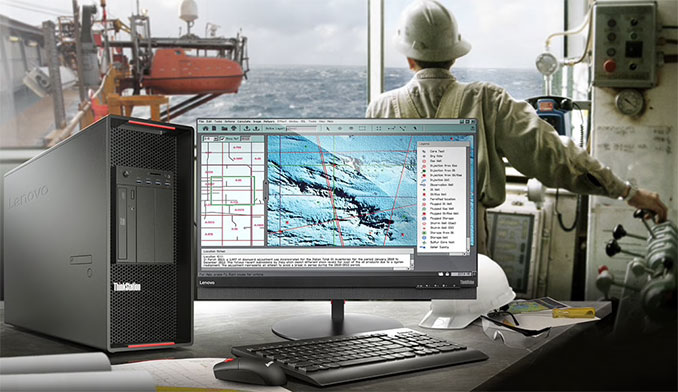
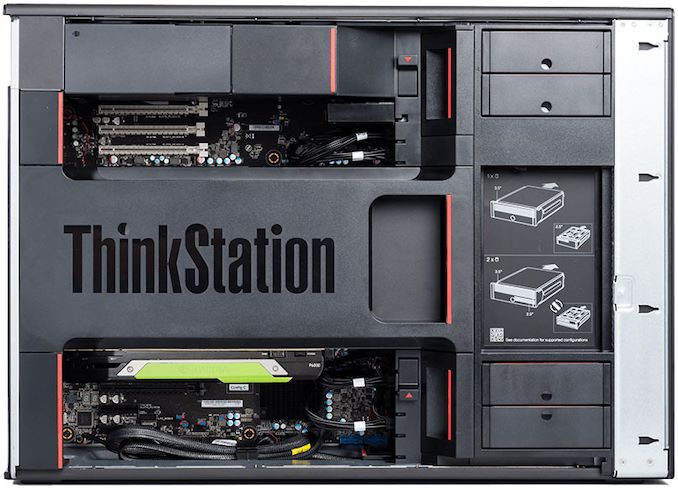


 Quote
Quote

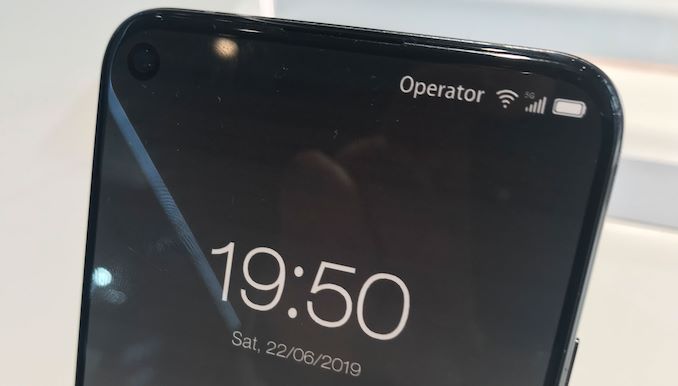


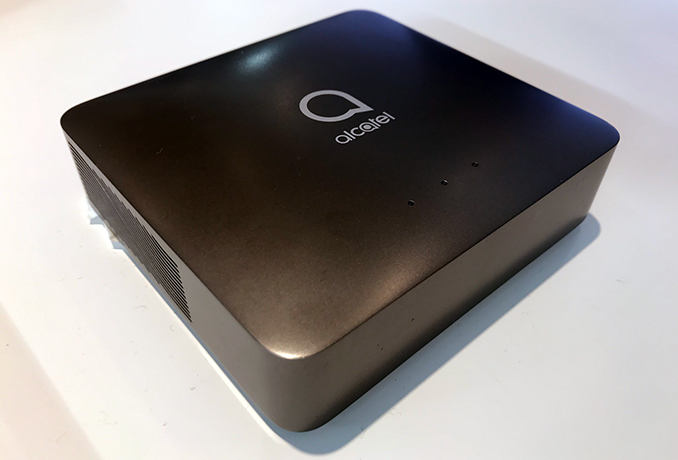
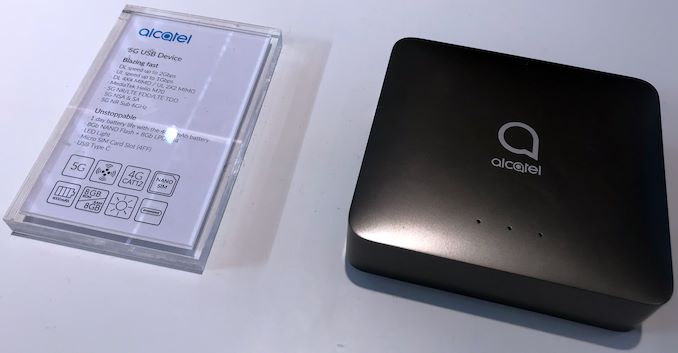
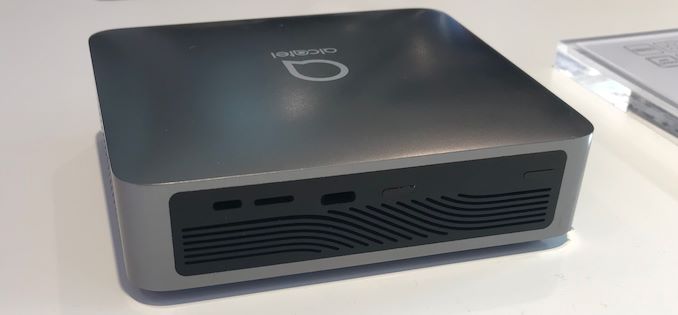
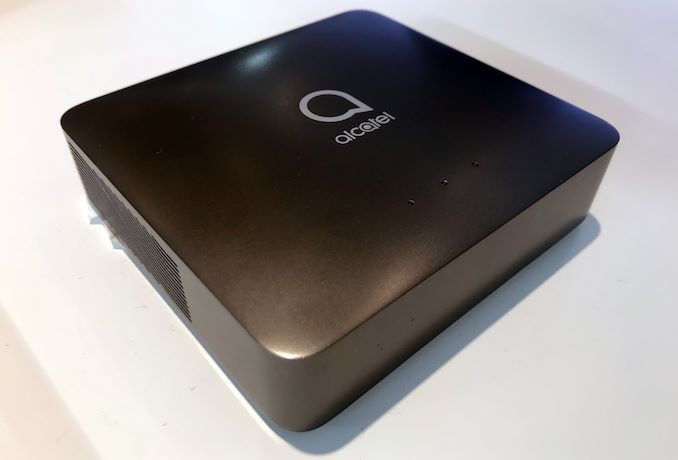
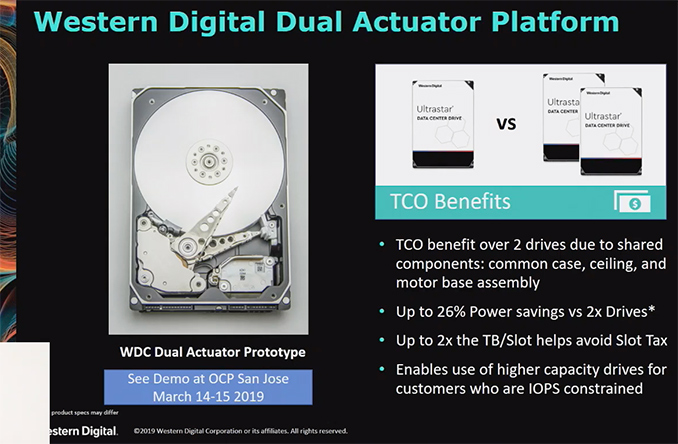
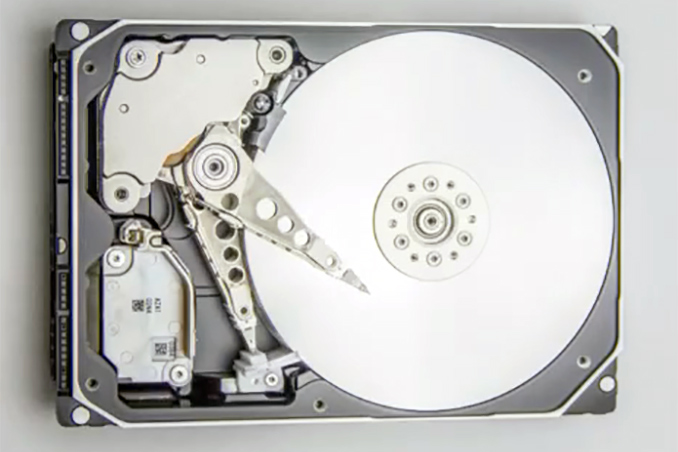
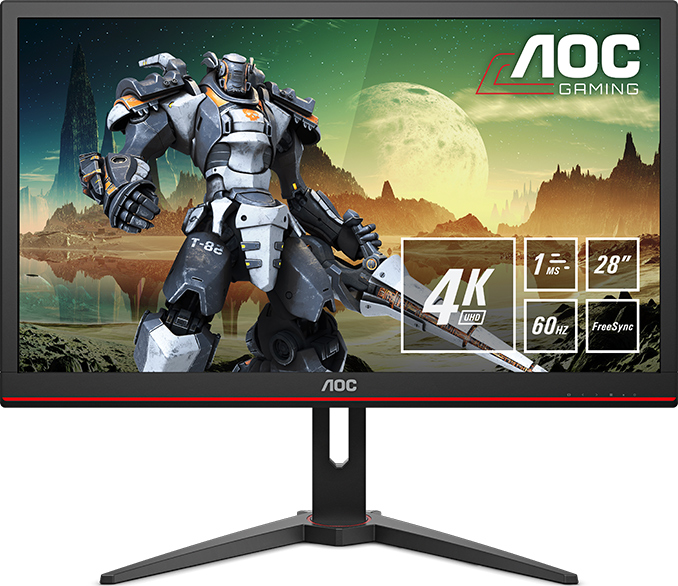
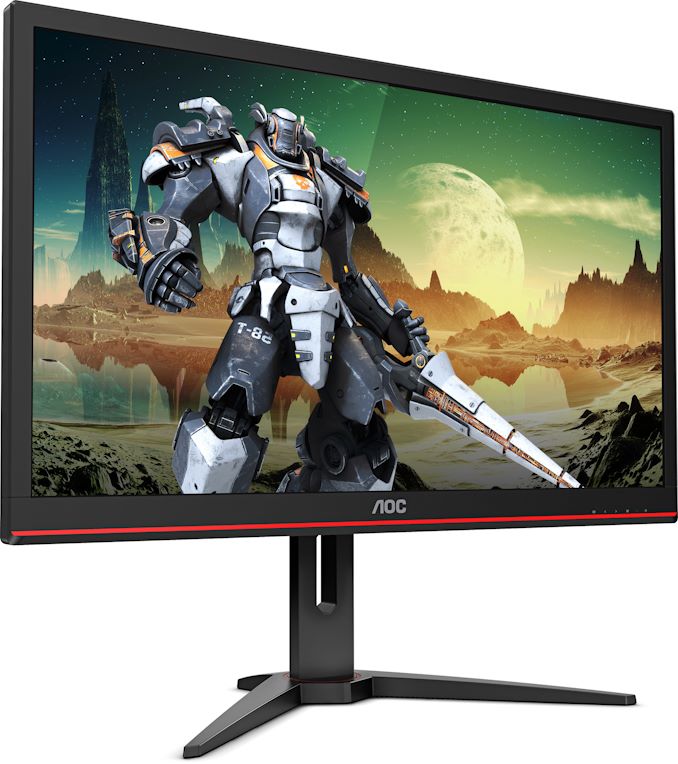
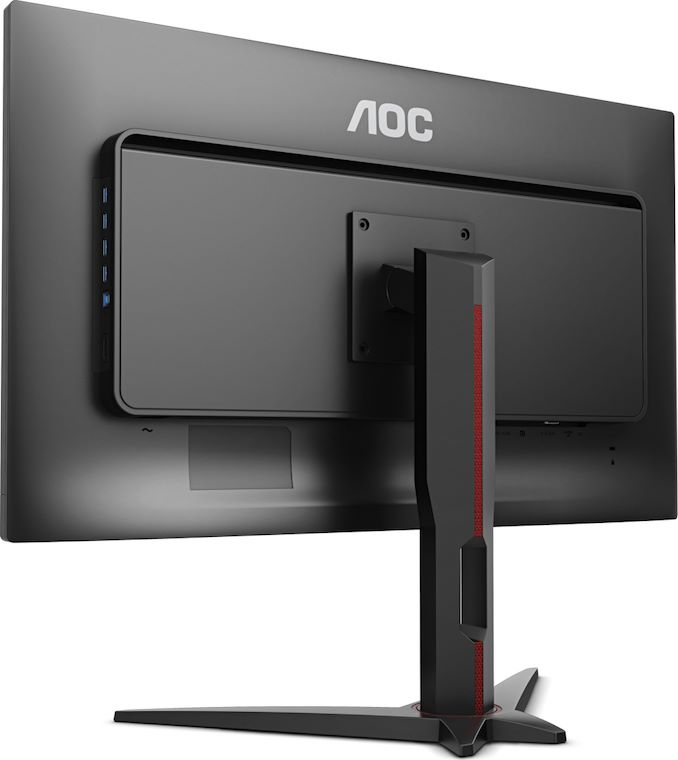

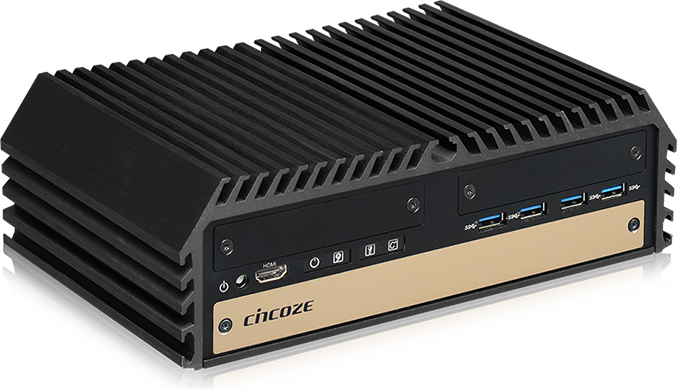
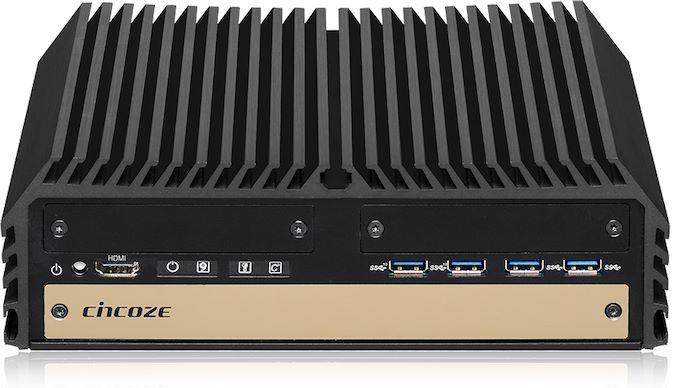
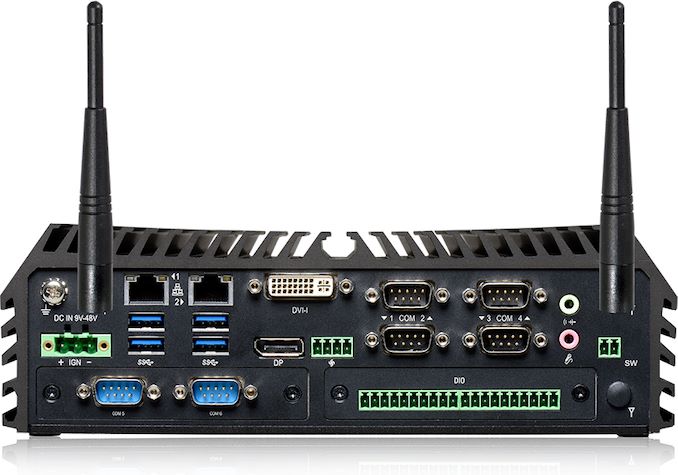

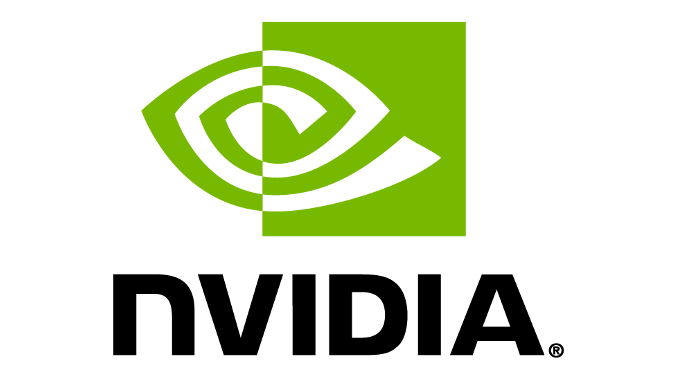

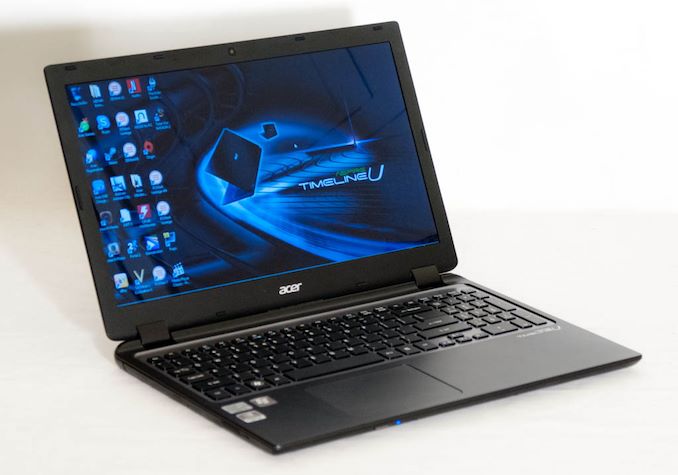
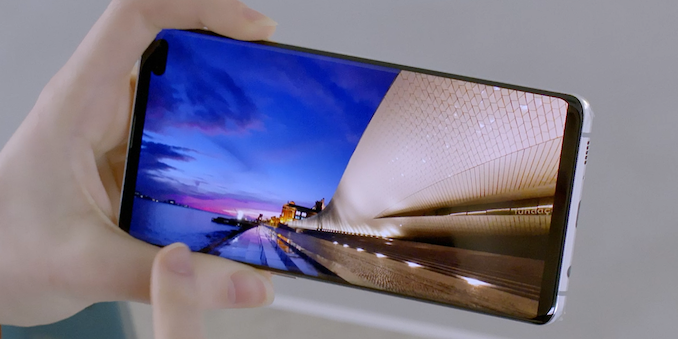
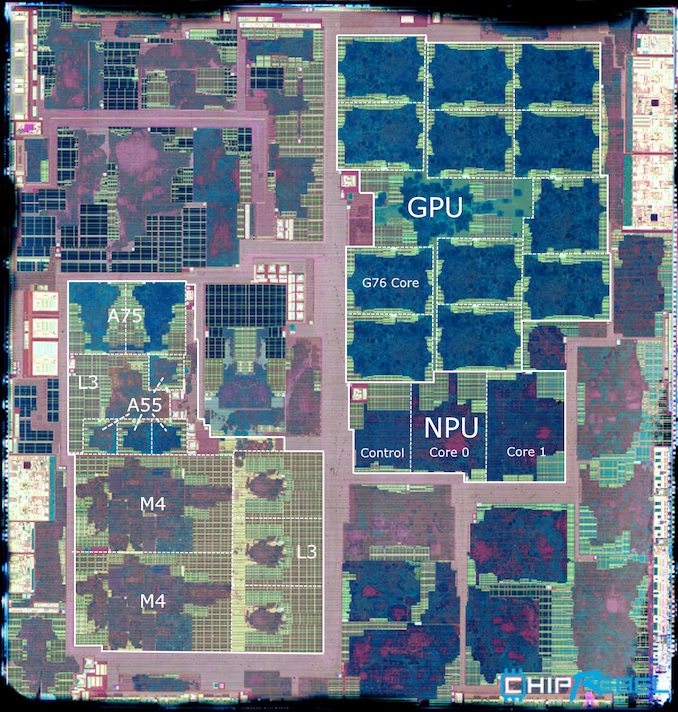

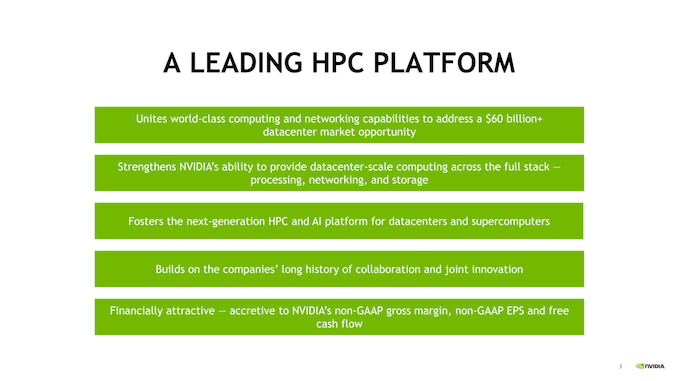
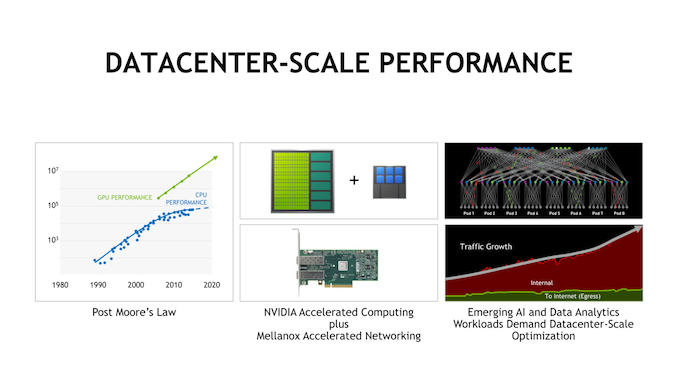


















Bookmarks